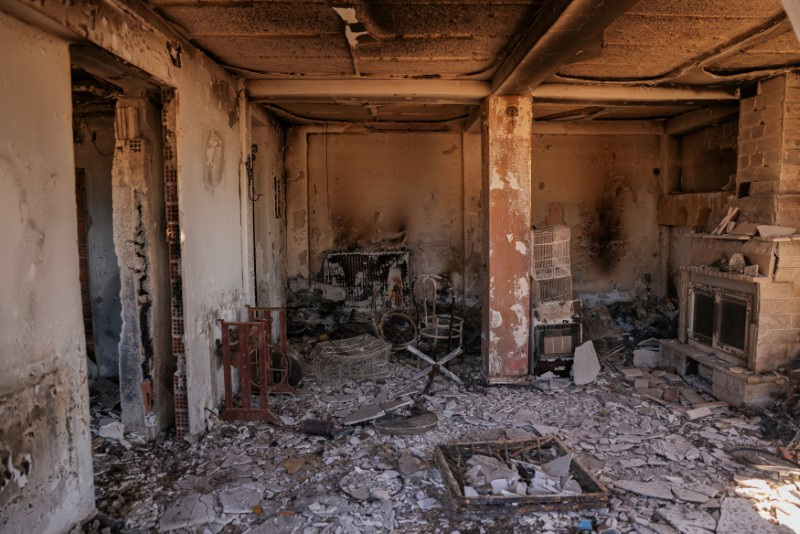Vangelis Ilias, a seasoned sculptor, had just returned from a peaceful holiday when he received a call that would unravel his world. Friends frantically informed him that a wildfire, which had been ravaging the forests north of Athens, was now barreling toward his neighborhood in Vrilissia—a place he had never imagined could fall victim to such fury. The firestorm was approaching his sculpture workshop with relentless speed.
Just minutes later, the flames claimed his shop, a humble structure nestled between warehouses, open fields, and a wood seller’s yard, situated just 10 kilometers (6 miles) from the heart of Athens. This was not just any fire; it was Greece’s most ferocious blaze of the year.
Ilias, now 55 and a father of two, was left stunned. When he chose Vrilissia to start his workshop two years ago, the possibility of wildfires sweeping this close to civilization seemed unimaginable. Yet here he stood, surrounded by the charred remains of his life’s work. The once sturdy sheet metal walls of his workshop were now buckled and blackened. He recounted the terrifying speed with which the flames spread, leaping from plot to plot before engulfing a neighboring warehouse.
“It jumped over to mine and burned it down. From here, it went next door and then to the house next to it,” Ilias lamented, suspecting that human error or even malicious intent might be to blame. “A minor carelessness, negligence, arson… and the damage is done.”
Among the ashes lay a shattered plaster bust of a soldier, a stark symbol of the destruction. The intense heat had even caused stone blocks to explode.
Despite the heroic efforts of hundreds of firefighters, aircraft, and trucks, the wildfire, fueled by gale-force winds, moved with terrifying speed into the suburbs on that fateful Monday. Homes were incinerated, and a wave of panic swept through neighborhoods that had never before witnessed such devastation.
The air was thick with smoke and ash as hundreds of residents, faces covered with makeshift masks of bandanas or t-shirts, took to the streets. Many were forced to evacuate, leaving behind everything they had built.
‘FALL AND RISE AGAIN’
By Tuesday, the fire had been largely extinguished in the suburban areas, but the damage was done. The fact that such a disaster could strike densely populated areas so close to the capital served as a grim reminder of the ever-present threat posed by climate change. Greece’s once-vibrant forests and scrublands, now parched from reduced rainfall and scorching temperatures, had become a tinderbox, primed for ignition.
The scale of the disaster left the community in shock. One woman tragically lost her life in a wreath-making business in Vrilissia. Her colleague, 70-year-old Sakis Morfis, recounted how they had been joking together earlier that day. But by the time he returned from a quick errand, the entire area had been consumed by smoke. He barely had time to save his dogs before fleeing.
“Everything happened like lightning,” Morfis said, still grappling with the loss of his home and the tragic death of a friend. “Worst of all, we lost a colleague… a person you see every day, whom you greet with a good morning.”
Authorities were equally dumbfounded. Harris Mavroudis, the deputy mayor responsible for civil protection, expressed his disbelief. “It’s insane, not only unusual, what has happened,” he said, emphasizing that such a catastrophe had never before struck their municipality.
Yet, amidst the wreckage, Ilias the sculptor remains resolute. He is determined to rebuild, unfazed by the devastation. The fire, he believes, has run its course, and he is confident it won’t return for years.
“Life has shown me many times that this is the way to go: I fall and then I rise again,” he declared, embodying the resilience that will be needed to rebuild not just his workshop, but the community as a whole.

